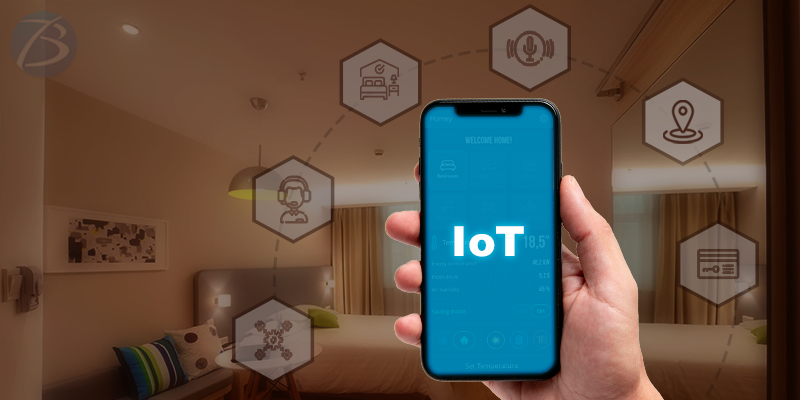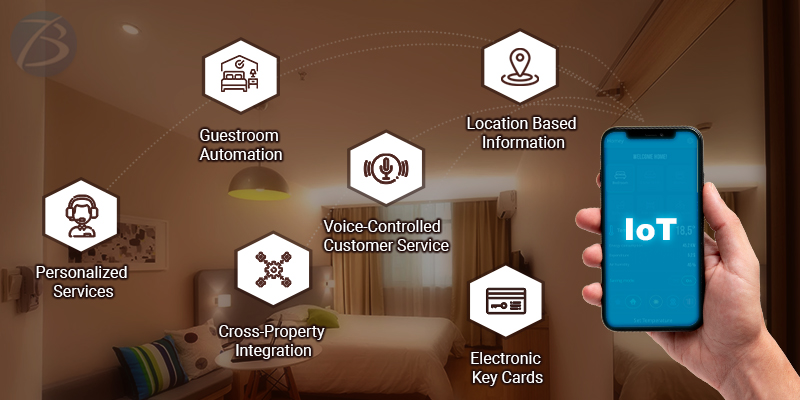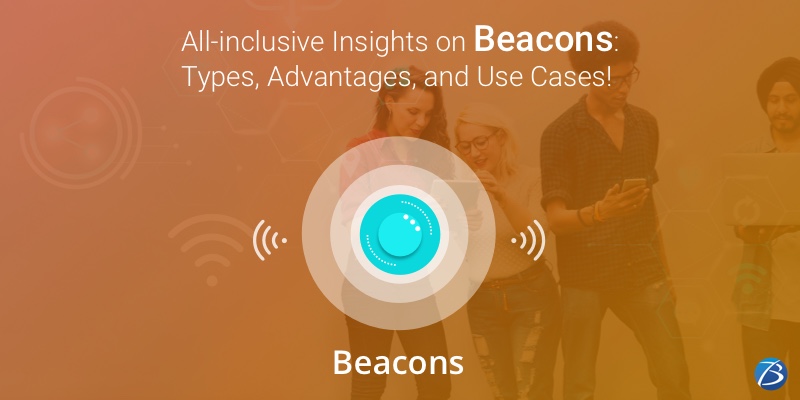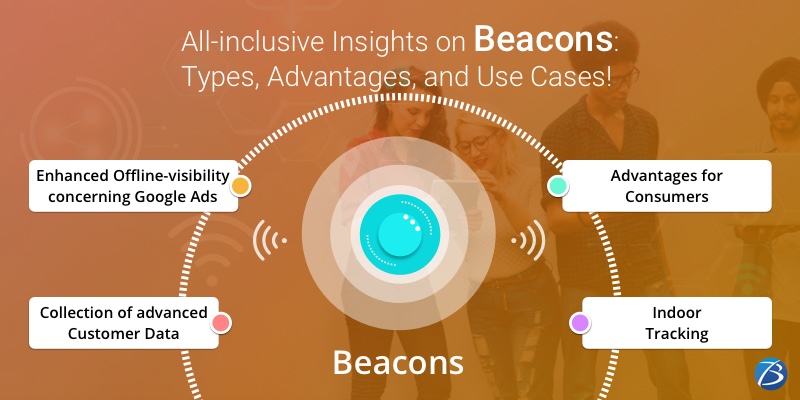How the Hospitality Industry is Enhancing with IoT Technology?


What does the hospitality industry crave the most? Providing an ultimate guest experience!
Since the rise of hospitality industry, providing the best services and experience to the guests has been its topmost priority. This industry already possesses a huge potential for revenue generation and technology has made it much more profitable. Especially, the Internet of Things (IoT) is playing a significant role in automating the processes while reducing operational expenses. It is enhancing the customer experience by making the physical assets smarter. IoT has drastically changed the way this industry used to work.
Marriott International has launched an IoT hotel room which is an amazing example of how the future of hotels may look like. Marriott’s own Innovation Lab has teamed up with Legrand and Samsung for this project. The IoT hotel room is capable of performing several activities automatically to elevate the guest experience.
This blog will give you a glimpse of the applications and the benefits of IoT in hospitality industry. Let us first have a look at its applications.
IoT Solutions and Applications for Hospitality Industry

Guestroom Automation
IoT automation can help the hotels deliver services as per the guests’ likings. For instance, a hotel app on the guest’s Smartphone or tablet can connect to the controlling devices to control the lights, temperatures, etc. of the room. As the guests enter the room, the lights are turned on automatically using the sensors and turned off as the guests leave the room. Even the temperatures can be controlled automatically. The AC will switch on and off automatically and as per the guest’s presence. This also helps with energy savings.
In some hotels with a centralized AC system, the room temperature can be controlled depending on the outside temperatures or seasons for providing a better guest experience.
Electronic Key Cards
Instead of physical key cards, IoT applications make it possible to send the electronic key card directly to the mobile phones of guests. This will communicate with the door lock and unlock it, without the need for a separate key.
Personalized services
IoT systems help the guests control the temperature of the rooms as per their choice, switch on the television, manage the curtains electronically, etc. Thus, the guests get a super-personalized experience.
Voice-controlled Customer Service
Nowadays, voice-controlled customer service is becoming a new trend in hotel industry. This area is sure to expand in the coming years. The guests can request room service or book a spa session or a table for dinner using this service, without the need to call every time. For instance, Amazon Alexa is a voice-based interaction assistant which utilises IoT. It allows the guests to manage the in-room features.
Location-based Information
Connected devices, Bluetooth, Beacons, GPS technology, etc. are used for collecting and providing location-based information to the guests. The hoteliers can send a message to their guests while they near the premises. They can inform of the menu items for the day or advertise of the laundry, cleaning, gym services, etc. They may also update the guests about the nearby attractions, local transport links, etc.
Cross-property Integration
Interacting IoT systems can be used to gather data like guest preferences and details. This data can be saved in centralized systems as the guest profile or updated in the CRM to maintain transparency of information across properties. It can be shared across the chain of hotel groups to deliver the same enriching experience to the guests if they visit any of the hotels in the chain across the world.
Few of the other applications of IoT in hospitality industry are:
- Surveillance and access control
- Food preparation monitoring
- Smart refrigeration
- Front desk management, housekeeping
- Guest data collection for management and more business in the future
- Predictive repairs and maintenance
- Energy savings through temperature control, air-conditioning, etc.
IoT is a smart and new-age investment for hotels and the hospitality industry. Let us also understand the advantages IoT offers to this industry.
Top Benefits of IoT in Hospitality Industry
Enhances the customer experience:
Customer experience is the winning factor in this industry. IoT ensures fast and personalized services which makes the customers happy and gains their trust. This results in improved customer loyalty and retains the customers while ensuring they visit again. These customers may also recommend the hotel to their friends and family which might give more business.
Optimizes the expenditure:
Embedding IoT applications is a lucrative investment. It helps the hospitality industry to provide quality services as well as save money at the same time. The hoteliers can keep a watch on their workload savings, energy usage, etc. and optimize their resources. For instance, when the guests leave their room, the lights get turned-off automatically, which results in cost-savings in the long run.
Predictive analytics:
IoT devices help to collect valuable data that can be smartly utilized for modifying the existing services or introducing more services. They can track real-time data about what their customers prefer and accordingly offer them the services pro-actively. It also informs the staff about the deterioration or unusual performance of the appliances in advance. It helps to avoid emergency repairs, improve the efficiency of staff and reduce customer complaints.
Synchronization with existing devices:
Incorporating IoT solutions for hospitality industry doesn’t require replacement of the existing devices or restructuring of the hotel bodies. With some modifications, IoT systems can be well-utilized to enhance the services and provide a rich guest experience.
Are You Interested in Building a Top-Class Website or Mobile App?
Final Words
IoT solutions offer a personalized, secure and soothing experience to the guests. The guests don’t need to wait in long queues while checking-in and checking-out. They can control the devices without having to leave their place. Such facilities make the guests feel special and valued. IoT applications also lower the energy costs and save time for the staff in the hospitality industry. Many hotels and travel companies have already started incorporating the
IoT solutions and they are definitely ahead of their competitors.
Was this blog a helpful read? Let us know your thoughts on this through your comments. If you want to know more about IoT in Hospitality industry, contact us!



